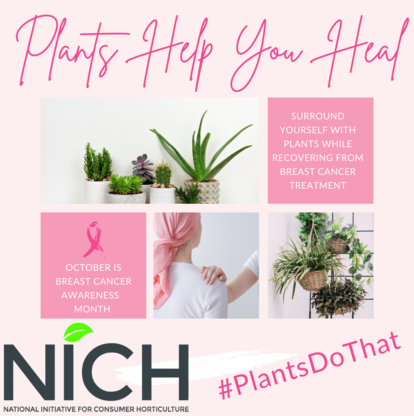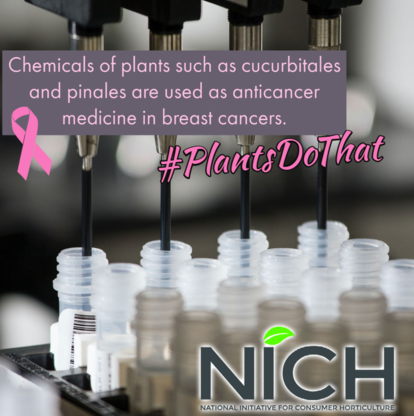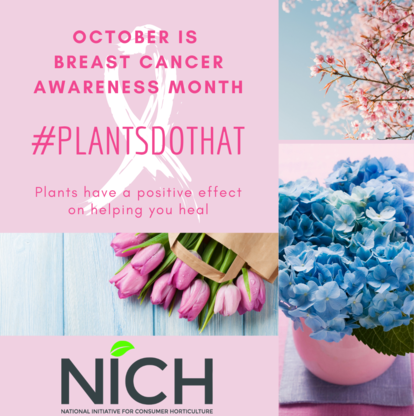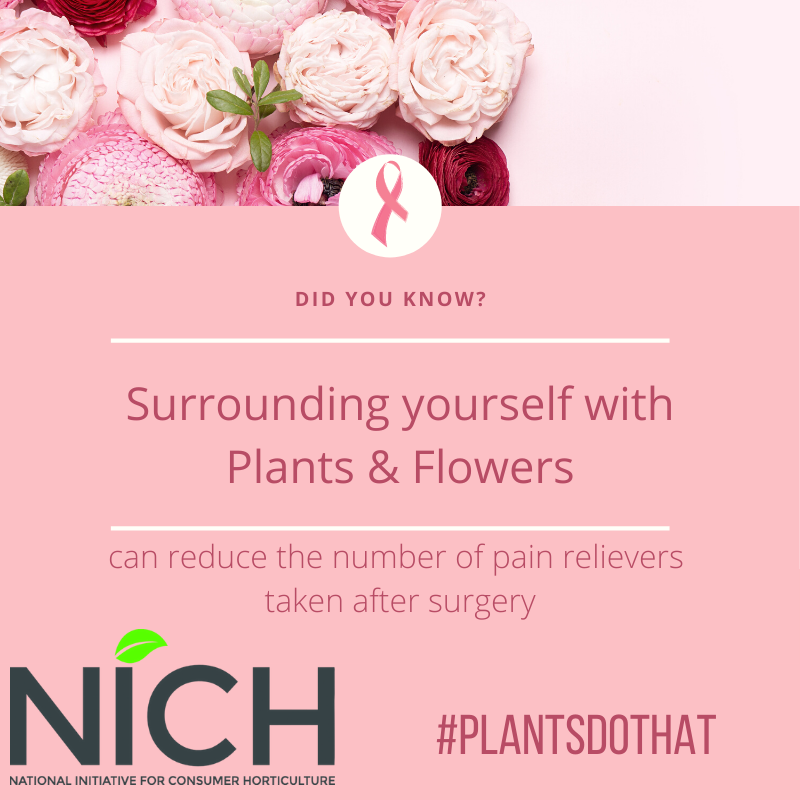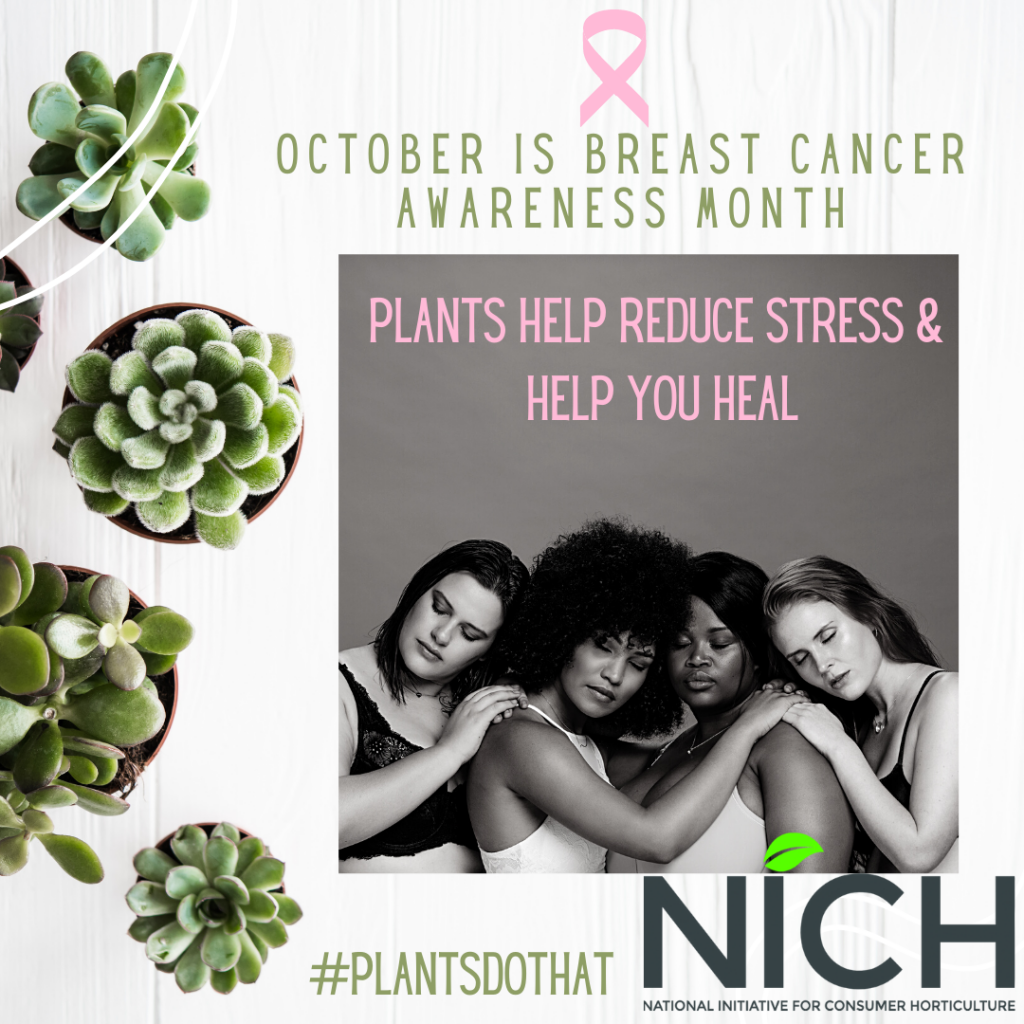2020 has been a powerful reminder that we are all in this together, and our choices and actions have the power to protect the most vulnerable among us in a big way. With October being Breast Cancer Awareness month, there is no better time to highlight the benefits of plants and the relationship they have with our health.
Please share #PlantsDoThat Inside Where We Heal, an infographic developed by the National Initiative for Consumer Horticulture (NICH) that spotlights the importance of plants in doctor’s offices and clinics, hospitals and other recuperative environments. This free infographic is a great tool to raise awareness of the power of plants for our health and wellness.
Research has proven that plants help us heal. Want to shorten the stay in the hospital and heal quicker? “Patients spend less time in recovery and go home faster when there are plants in the room,” says Dr. Charles Hall, Ellison Chair, Texas A&M. Plants viewed through the window or on the wall in a picture also help.
Just looking at pots of flowers and plants make people more relaxed and aware. A study of EEG (electrical brain activity) measurements shows more relaxation when viewing greenery compared to looking at a concrete structure. Other positive effects of plants to help us heal include:
- Reducing stress and lowering blood pressure;
- Helping new breast cancer patients better tolerate their diagnosis and treatment;
- Reducing the amount of pain relievers taken after surgery; and
- Decreasing time patients spend in recovery, allowing them to go home sooner.
This infographic and others developed by NICH Committees use data gathered from research publications, extension publications, government organization outputs, and resource websites. Each infographic was developed by committee members specializing within the topic area and familiar with the research that most impacts consumers.
The National Initiative for Consumer Horticulture (NICH) is a consortium of industry leaders who are promoting the benefits and value of horticulture. NICH brings together academia, government, industry, and nonprofits to cultivate the growth and development of a healthy world through landscapes, gardens and plants – indoors and out. The Mission of the National Initiative for Consumer Horticulture is to grow a healthy world through the art, science and business of plants, gardens and landscapes.

